



TROUT
Summer 2023 Summer 2023 LANDON MAYER
FISHERIES BRIAN LA
TROUT IN THE CLASSROOM
SUMMER
TIPS
SECRET
RUE 2022-2023
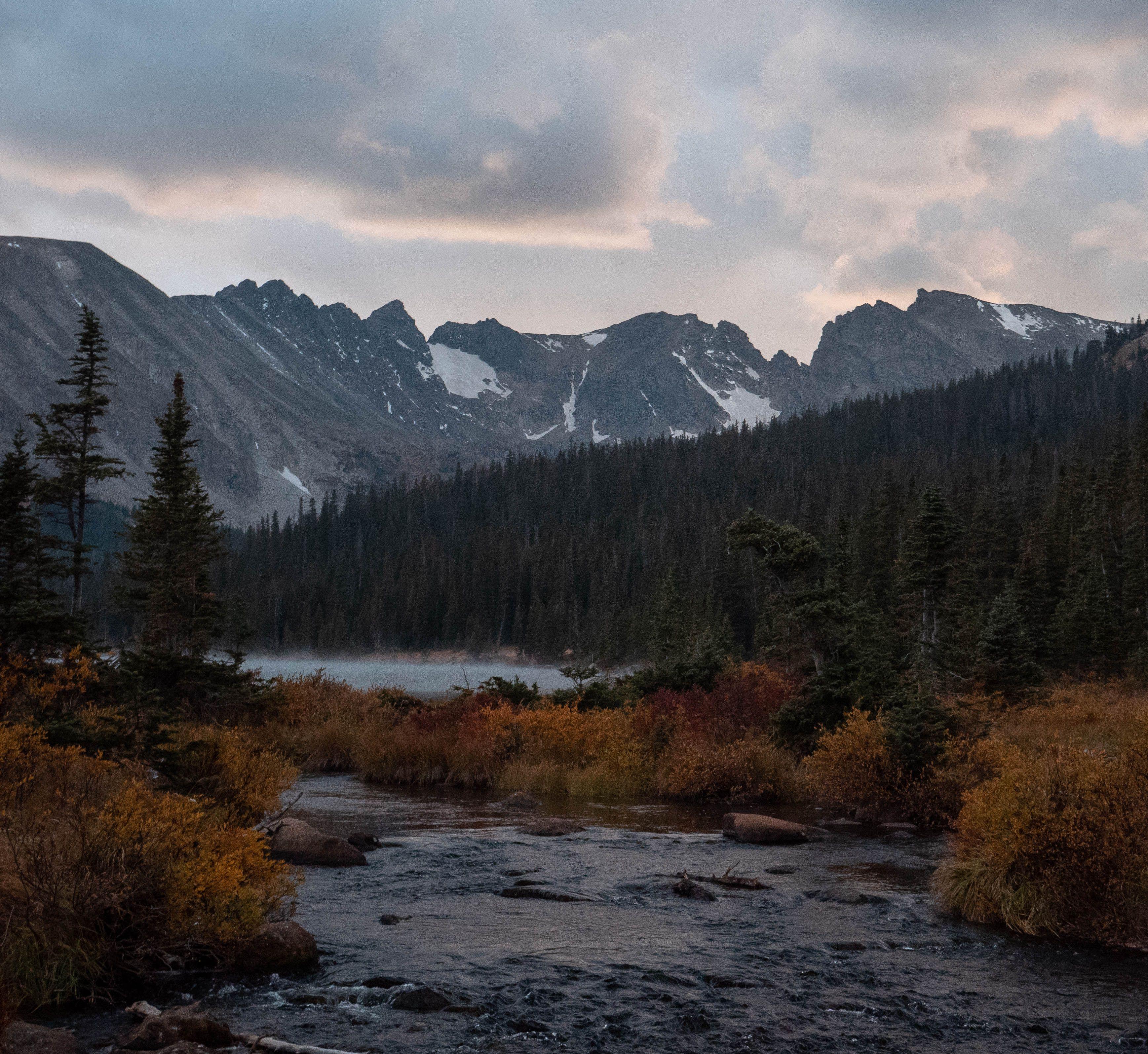


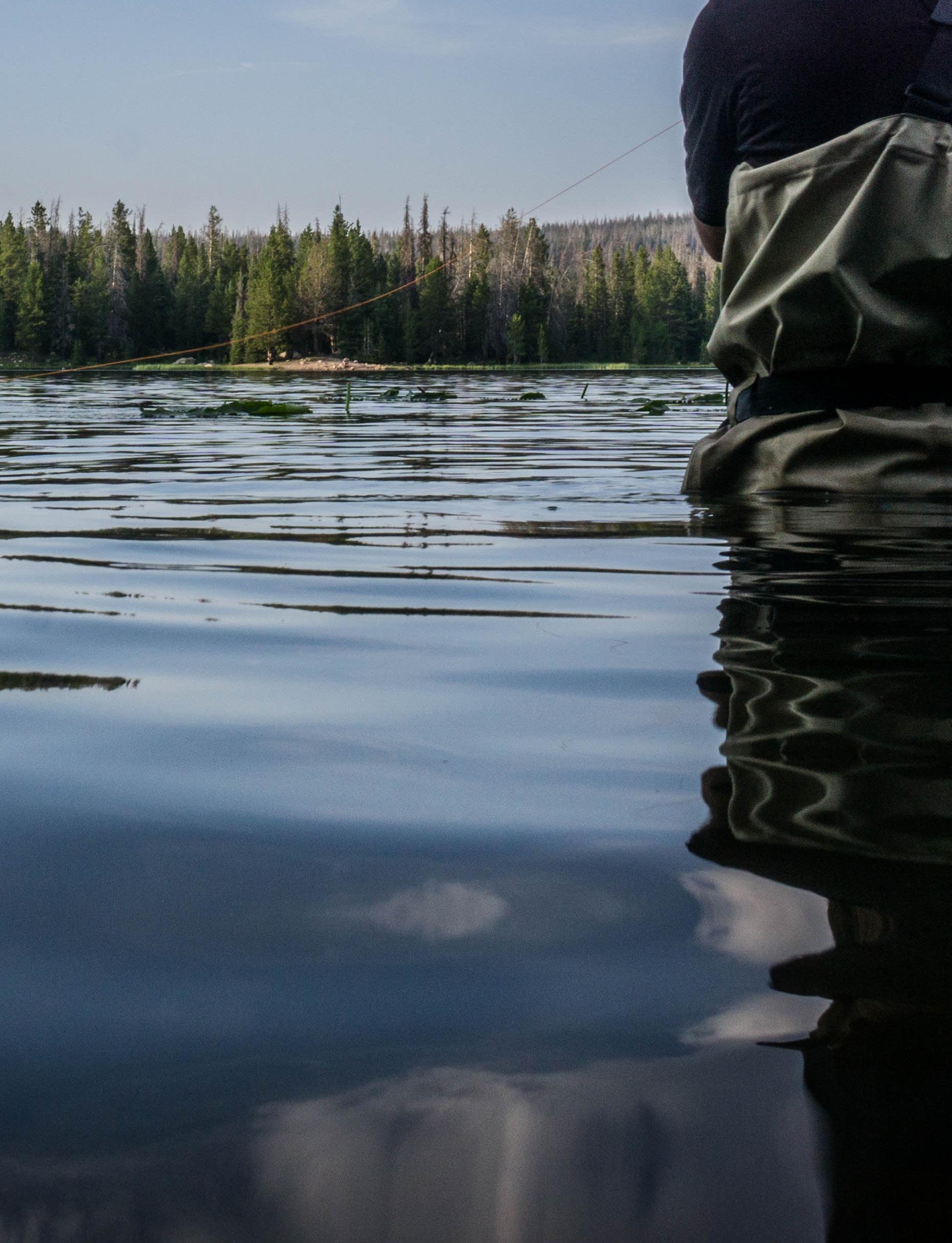
Spend your time fiddling with flies, not with software. We've been designing High Country Angler for over a decade. reimagine designs (816) 892-0810 david@reimaginedesigns.com Call or email us for a free estimate for all print and website design.


SUMMER 2023 VOLUME 20 • ISSUE 3 MAGAZINE CONTENTS 08 SUMMER TROUT TIPS BY LANDON MAYER 14 SECRET FISHERIES TO REMAIN SECRET BY BRIAN LA RUE 20 TROUT IN THE CLASSROOM BY COLORADO TU STAFF 26 FIRST STEP FOR STREAM RESTORATION BY COLORADO TU STAFF 30 SUMMERTIME, AND THE FISHIN’ IS EASY BY HAYDEN MELSOP 32 THE ANATOMY OF THE EURO ROD & REEL BY PETER STITCHER 36 TROUTFEST LIGHT CADDIS BY JOEL EVANS 38 RISING TO THE NATIVE TROUT CHALLENGE BY COLORADO TU STAFF 46 TU PARTNER PROFILE: THE BOATHOUSE BY COLORADO TU STAFF 50 WHAT MAKES A SPECIES A SPECIES? BY
JOHN NICKUM
PUBLISHERS
Jack Tallon & Frank Martin
CONTENT CONSULTANT
Landon Mayer
EDITORIAL
Frank Martin, Managing Editor frank@hcamagazine.com
Landon Mayer, Editorial Consultant Ruthie Martin, Editor
ADVERTISING
Brian La Rue, Sales & Marketing
brian@hcamagazine.com
Direct: ( 303) 502-4019
Mark Shulman, Ad Sales Cell: (303) 668-2591

mark@hcamagazine.com
DESIGN
David Martin, Creative Director & Graphic Designer
PHOTOGRAPHY
Frank Martin, Landon Mayer, Brian LaRue, Angus Drummond
STAFF WRITERS
Frank Martin, Landon Mayer, Brian LaRue, Joel Evans, David Nickum, John Nickum, Peter Stitcher
Copyright 2017, High Country Angler, a division of High Country Publications, LLC. All rights reserved. Reprinting of any content or photos without expressed written consent of publisher is prohibited. Published four (4) times per year.

To add your shop or business to our distribution list, contact Frank Martin at frank@hcamagazine.com.
Distributed by High Country Publications, LLC 730 Popes Valley Drive Colorado Springs, Colorado 80919 FAX 719-593-0040
Published in cooperation with Colorado Trout Unlimited 1536 Wynkoop Street, Suite 320 Denver, CO 80202 www.coloradotu.org
HCA Staff ON THE COVER: PHIL THORTON
GO GUIDE
WITH
PHOTO BY LANDON MAYER


7
SUMMER TROUT TIPS
 by Landon Mayer
by Landon Mayer
With the warm season and long days in play, anglers can enjoy more time to pursue the rewards summer has to offer. Fishing during these extended adventures increases the opportunity to learn every day on the water. An angler’s journal can be an excellent way to collect the details that help us become better anglers every time we fish. Let’s take a detailed look at some of the Summer Trout Tips I have learned over the years. These and many more can be found in my book 101 Trout Tips: A Guide’s Secrets, Tactics, and Techniques with Stackpole Books.
Early Bird
PROBLEM: I am showing up early and having limited success.
SOLUTION: Try showing up during later hours when you know the hatch takes place.
It is an old saying: “The early bird gets the worm.” In our context, it means the first angler to the river will be rewarded with the best water to fish and the best fishing to unpressured trout. While it is true that you will find fewer anglers about—especially in cold or stormy conditions—the problem is that early anglers miss some of the best action the river can supply, because the water temperature needs to increase for hatches to bloom and trout to become active. I usually start my trips between 8:30 and 9 in the morning.
No, I am not being lazy; I am targeting water that is full of activity and not wasting the angler’s time when the fishing is slow. Start timing the hatches you see and fish, and take notes for future reference. This will help you understand when to be on the water. It also helps to take the temperature of the river every time you see a hatch come off or fish begin feeding. Having this reference is key, because the weather is never the same; some years are colder
High Country Angler • Summer 2023 www.HCAezine.com 8

9
or warmer than others, and this can affect trout behavior. By starting at 9 a.m., I am able to see what food supplies are active in the afternoon hours.
Some anglers leave as the first hatch dies, but the trout are simply waiting for the next meal. I see this a lot in my home state of Colorado. The Tricos bloom in the morning hours, producing great dry-fly action. This hatch will begin to disperse by noon, fooling many anglers into thinking the hatch is done and it is time to leave. By 1 p.m. the Pale Morning Duns begin to hatch, and the action starts again. Never cut yourself short from action, and don’t lose quality time by leading the hatch too much in the morning.

Trout see their prey’s silhouette and size when they look up while feeding. Simple, classic imitations like the Griffith’s Gnat are the most reliable dry-fly patterns. Once you have selected the right size to match the natural midges on the surface, a common problem is seeing the fly when it is lost in the crowd of natural midge adults. As a child I was always a big fan of the Orange Asher or Bloody Butcher whenever I fished in new spots, as these flies seemed to work everywhere.
Stand Out in a Crowd
PROBLEM: My dry fly is getting lost among the naturals during presentations in low light.
SOLUTION: Try changing the color of the imitation, knowing the trout will only see the silhouette in low light.
I never thought my earliest fishing memories would impart knowledge that would lead to great results in adulthood. By replacing those flies’ natural grizzly hackle with dyed pink, orange, or red, I was able to track the small imitation in the blizzard of adults and see the take. I have found that pink stands out best in low light. Using the same bright colors as the post on a parachute dry is another great advantage for trout hunters who want to be able to see their flies in a wide range of light conditions.
Select or tie the post dense with material while cutting it low, so the fish cannot detect any bright col-
High Country Angler • Summer 2023 www.HCAezine.com 10
ors on the imitation. As we do with nymphs, many anglers prefer to fish two dry flies at the same time to give the fish a few options. The dual-dry rigs can really help you track small flies that would otherwise get lost amid the naturals. Unlike nymphs, double drys should be separated by only 6 to 12 inches. From a distance they will appear side by side as they drift downstream. I prefer placing the largest (or tracking) dry first, with the smaller natural imitation trailing behind. Even if the trout does not eat the lead fly, it will appear that way because the lead fly immediately sinks when the rising trout takes the trailing fly.

Defeating Vegetation
PROBLEM: I am having problems fishing in vegetation.
SOLUTION: Switch to a topwater bite with attractors like hoppers, poppers, and mice.

Summer is a great time of year to target aggressive trout, but it can be a challenge to present sub-

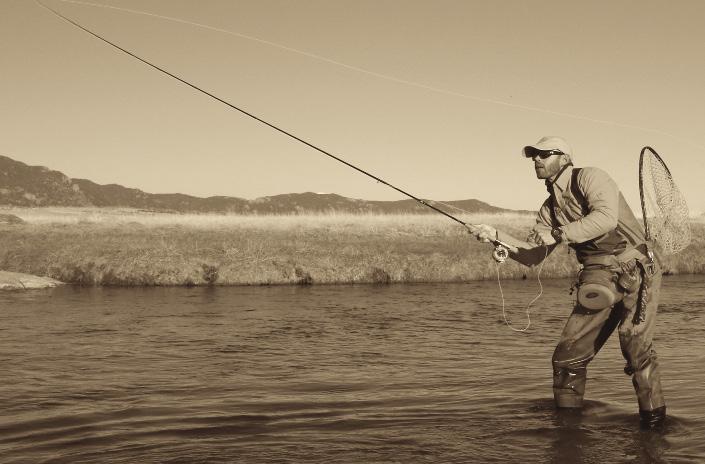
surface imitations amid the overgrowth of vegetation that results from low water flows. In fact, some of the vegetation can grow all the way to the surface of the water, making it impossible to get a subsurface drift of any kind. Brown trout love vegetation for the cover it supplies, and the food that calls these vegetation blankets home. When you know the trout will find comfort anywhere veg grows, more of the river opens up to presentations using topwater imitations. Hoppers and mice can be the ticket to luring trout out of these congested areas of the river.
Start by targeting low-light situations when trout begin to move out of protected areas as the light disappears, and shadows or movement cannot be detected. My favorite times for low light are two hours before dark and when the skies turn black with the promise of snow or rain. You can then begin searching with flies that ride low in the film to create a waking disturbance that will get the giants’ attention. Some of my go-to flies are #8-14 Moorish Mice, #10-14 Fat Albert, and #10-14 Redleg Hoppers. Mimic the searching method you would use with a streamer by walking down- or upriver three to five feet at a time, casting to
www.HCAezine.com Summer 2023 • High Country Angler 11 WWW.LANDONMAYERFLYFISHING.COM NEW VIDEO! Order Your Copy Today!
the opposite bank and letting the fly swing to the bank you are standing on. You can see the wake in the heavy glare created by stormy skies, or near nightfall when the water surface looks like a glass road covered in black ice. This will allow you to see and stay connected with the fly and know when the fish takes. Sections of the river will have open pockets scattered through deep runs, and often around log or rock structures. These pockets give you deep access to present nymphs and streamers to trout that hold there, waiting to ambush their next meal. Make sure your flies sink quickly. Don’t use a stripping retrieve with streamers; instead, jig the fly to produce movement in the open pocket. The ideal scenario is to have the tip of your rod directly above your flies to keep tension to your leader, and give you the ability to lift and drop your flies immediately to create movement
and prevent snags.
While these are only a few of the many problems that commonly occur in the long, lazy fishing days of summer, they are some of the most common. The next time you run into the fly fishing frustration that can challenge a great day, take the time to incorporate these solutions. It might just turn an ordinary summer day ditching work into a trout hunt to remember.
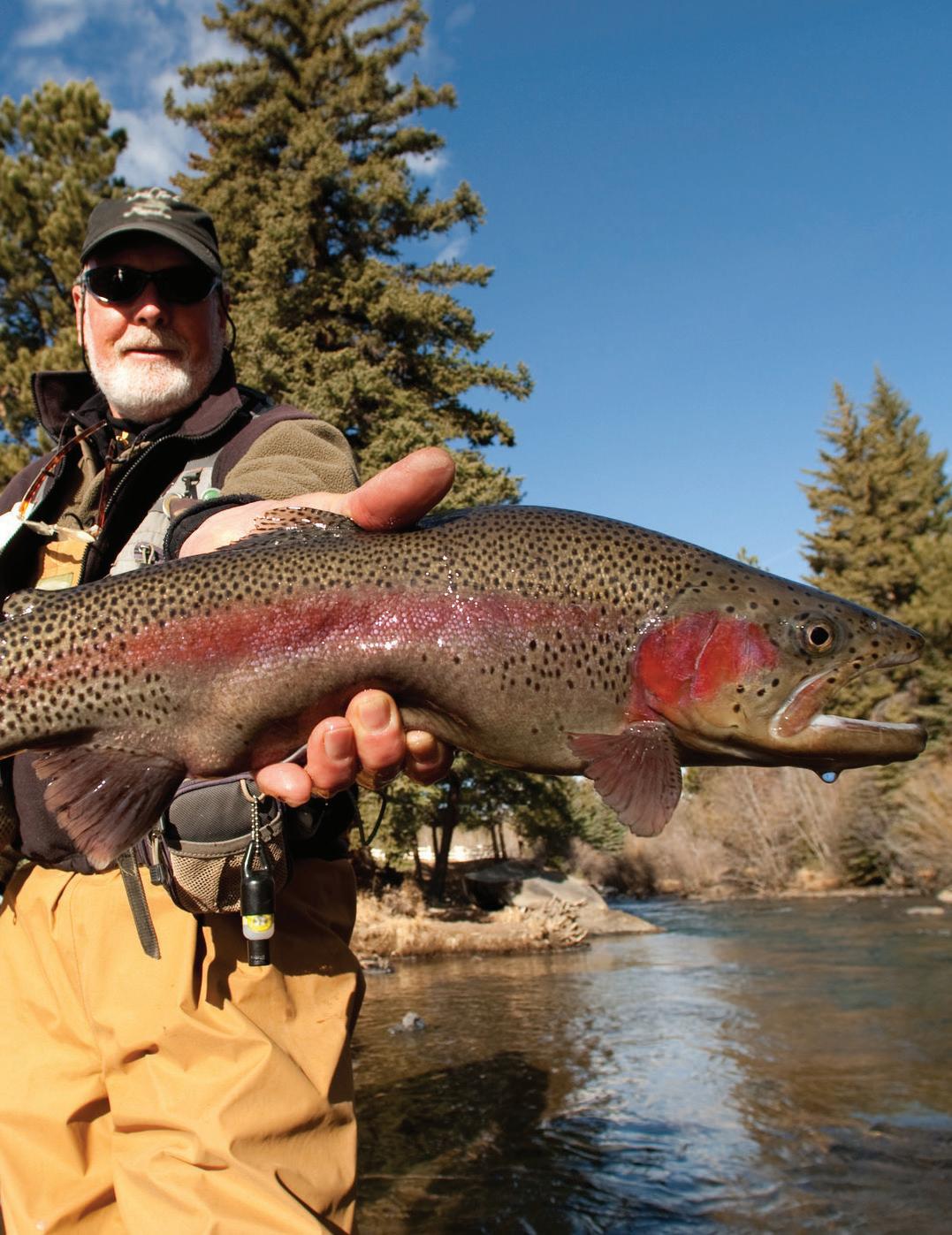
About Landon
Landon Mayer is a veteran Colorado guide and author of several books. His newest book, Guide Flies: Easy-to-Tie Patterns for Tough Trout, can be purchased on his website at www.landonmayerflyfishing.com. You can follow Landon on Instagram at @landonmayerflyfishing.
High Country Angler • Summer 2023 www.HCAezine.com 12
FISHERIES TO SECRET
 by Brian La Rue
by Brian La Rue
As the destinations writer for High Country Angler the past 14 years, I’ve gotten a lot of questions regarding off-the-beaten-path fisheries. I purposely avoid these rivers and creeks and backcountry lakes—not physically of course, but when it comes to writing, I leave them for folks to discover on their own!
These fisheries are better left secret, since most of the time they are hidden gems, only have a short window for prime action, and they are the kind of waters where if you bring more than yourself and a buddy— there’s just not enough accessible water for more than two to three anglers a day.
I’m not going to give you any names or locations, but just get yourself a topographical map, fire up Google Earth, and think headwaters! You’ll find that most of the waters are on these maps—tributaries to great rivers, or they have all the right ingredients for the perfect trout cocktail. Some are just small feeders to big lakes, while others are small collection areas at the bottom of steep canyons where only outlaws, deer and mountain lions have been. Then, go have a blast!
For the most part, these waters require some research to see what it’s going to take to get there. Are the roads better with a 4X4? When do they dry out, become snow-free or manageable? And then there’s tim-
ing of the flows. Most times, freestone creeks, streams, and small rivers are blown out late April through early June, with best fishing flows running from mid-June through August, at which point these waters might just be too low to fish—and forget winter.

Backcountry lakes typically become ice-free or at least fishable by June, and can fish well into the start of the next winter. The ones exposed to sun will of course thaw first. Fishing ice out can be amazing as the ice pulls back. Fishing inlets in July can be a lot of fun, as you can often follow the streams for a few bends to see what they offer, as well.
Another tactic is to look at a map and find a valley with a string of lakes. This way you get creek and lake action, and the lakes typically hold some nice cutties and brookies. Depending on the watershed, there might also be browns and rainbows to add to the fray.
My favorite memories of this type of exploratory fishing would have to be a creek in Utah and a string of lakes in a backcountry valley in the Eastern Sierra. I’ve enjoyed a few spots in Idaho, Wyoming, and Colorado as well, but these two earlier memories in Utah and the Eastern Sierra just stand out.
In Utah, there are a few unbelievably crowded lakes, very comparable to Spinney and Blue Mesa. I looked at one of these types of fisheries on a map and saw that it was about 11 miles of creek running from this particular lake to the highway below, with only one country road leading to the upper lake. Railroad tracks follow this creek for the entire length, with maybe one train a day.
The further you walk from the lake parking lot--- the less chances of seeing someone all day. A friend and I would start walking at 6:30 AM in the morning—fighting the urge to fish until we were about six miles downriver, and then we’d turn around and fish back. I’ve still yet to fish the remaining 5 miles. We’d catch and release upwards of 80 trout in the 13- to 22-inch range, and have seen monsters to 10 pounds in there, as well. There are some-
www.HCAezine.com
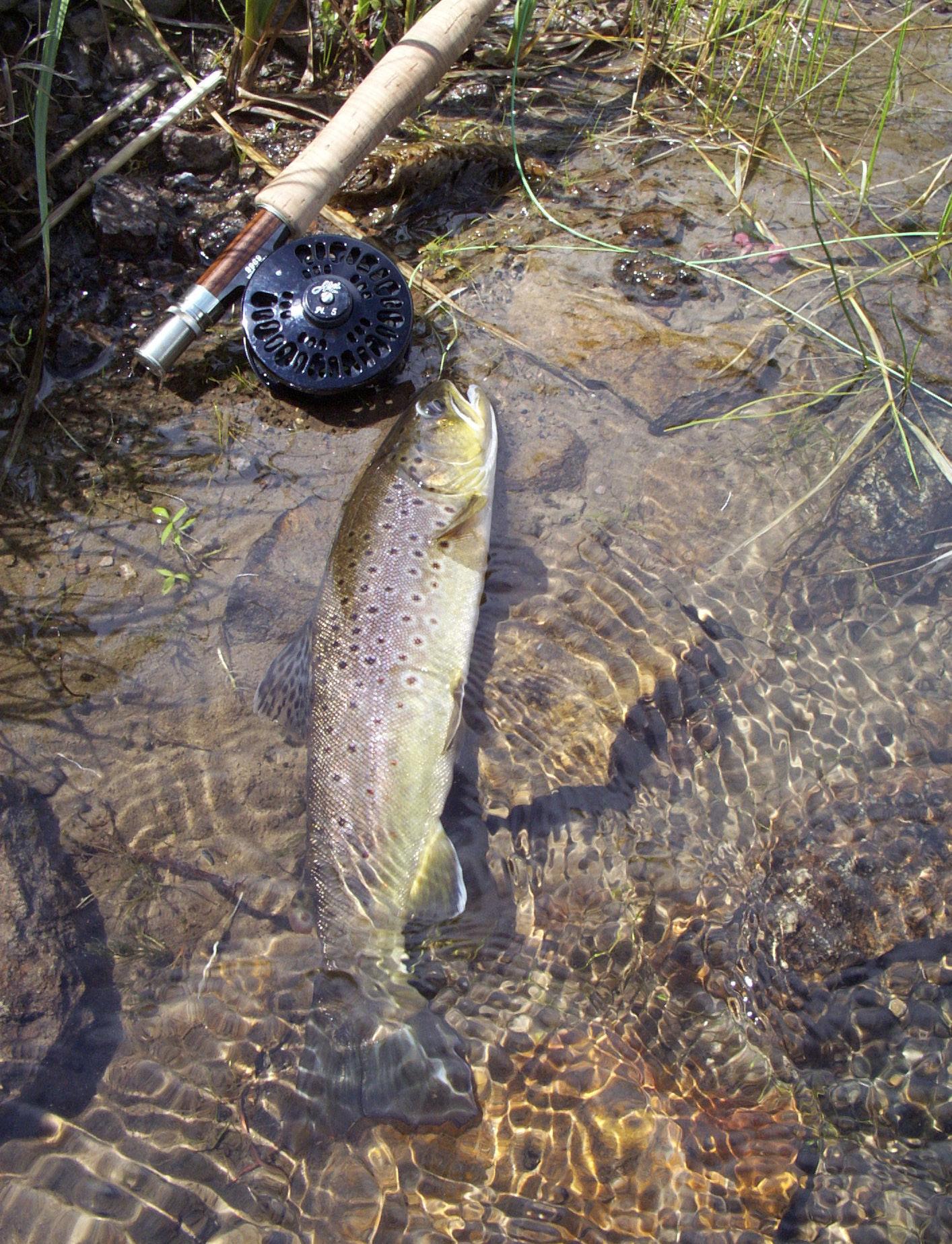
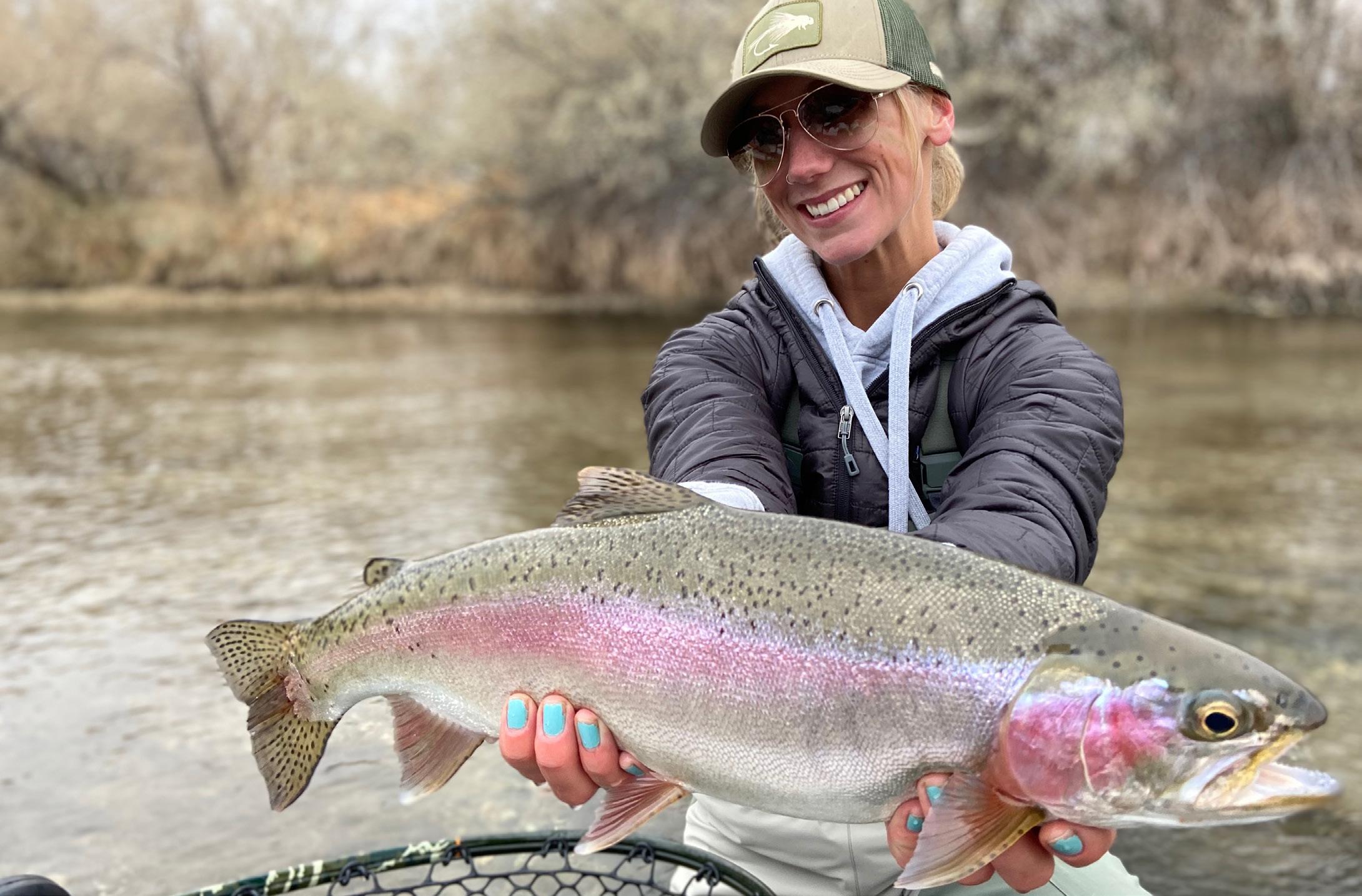
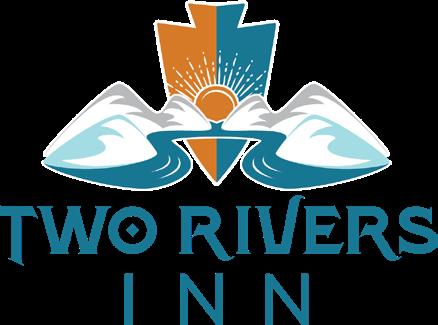
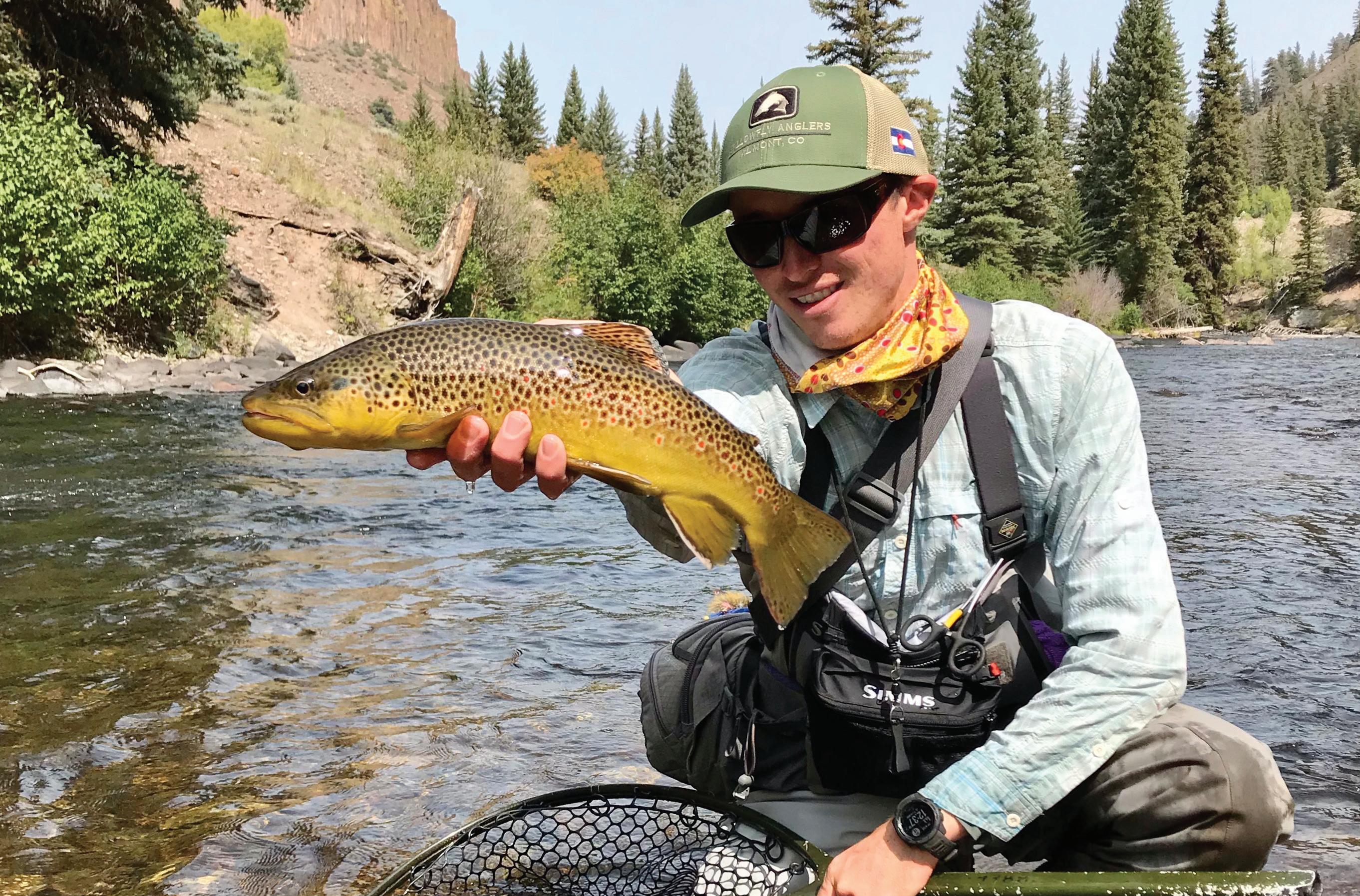
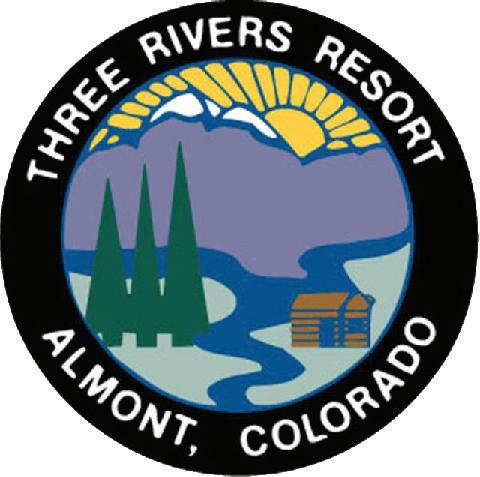


High Country Angler • Summer 2023 www.HCAezine.com 18 Get hooked on Thermopolis! Spring Special: Mention this ad for a two night stay, one day guided fishing trip on the Bighorn for just $650! Now through June 30, 2022 www.danpassrealestate.com www.thermopolisflyshop.com www.tworiversinnwy.com 303-877-5715 - cell Give Dan Pass a call today to learn more! Willowfly Anglers Guide Service at Three Rivers Resort 1-888-761-FISH (3474) www.3riversresort.com • 35 years experience on Colorado’s best rivers • Gunnison River – Taylor River – East River • Private Lease Fishing for the ultimate experience • Beautiful Cabins, Vacation Homes & Lodge Rooms • Summer Seasonal BBQ Restaurant • Complete Fly Shop,General Store & Activities Desk Colorado Outfitting Lic. #389. Colorado River Lic. #D0092
thing like 10 of these waters in Utah—just crack open the map or fly over with Google. Sometimes driving two hours along a highway and then just turning up into a canyon will produce yet another amazing day.
The water in the Eastern Sierra I mentioned was in the backcountry with a trailhead at about 9,800 feet. The trail follows the creek high into the valley, and it’s loaded with brookies, goldens and browns. The creek flows into a lake, then another, then another— seven total. Each creek stretch was amazing, but the lakes held 17-inch brookies and browns measuring 24 inches. Most folks on the trail are hikers….there aren’t many other anglers.
It's no secret what is going to work on these waters: Elk hair caddis, stimulators, Royal Wulffs, and small hoppers always work for me. The larger attractors and small hopper patterns will also work on dropper setups when the fish aren’t quite looking up yet. Lake fishing: same bugs, but add a midge rig, maybe a scud and a few streamer patterns, like a leech.
That brings us to the best time of day to fish these waters. I’d say, spend most of your time sleeping in or have a big breakfast—that’s the norm on these waters. Action typically gets rolling 9 AM to 10 AM, so no need to wake up at the crack of dawn unless you have a hike ahead of you.
That brings me to my final thought. If you are hiking off the beaten path, carry some kind of locator device, GPS, and go with at least one buddy, because a slip and fall out in the middle of no where could be rough if you are by yourself. And for those waters in Idaho, Wyoming and Mon tana—carry bear spray. Some thing about grizzly territory just
feels a little wilder. We don’t want to read about how you had an encounter with a bear, got your arm stuck between rocks, or that an alien abducted you. Good luck and be safe—the window is opening!
About The Author
High Country Angler contributor Brian La Rue enjoys giving fly fishers ideas of where to go for an adventure. Feel free to reach out to Brian at Brian@hcamagazine.com if you want your lodge or guide service featured in an upcoming promotional marketing plan.

www.HCAezine.com
45 sites released this year (over 3 times what we had last year)

1461 trout fry were released into our local watersheds (over 1.5 times what we released last year)





www.HCAezine.com Summer 2023 • High Country Angler 23 BOOK NOW for 2022 & 2023 Guide Reservations! Call (307) 527-7274 CODY/YELLOWSTONE’S Premier Fly Fishing Outfitter for over 35 Years Full Service Certified Pro Fly Shop • Reservations Recommended Full & Half Day Guided Trips • Beginners & Walk-ins Welcome www.northforkanglers.com 1107 Sheridan Ave., Cody, WY 82414 North Fork Anglers • BLM WYO20-RUO7-019 • Permitted by the Shoshone National Forest
10160 students and teachers engaged in this year's TIC program (over 5 times what we engaged last year)




25
Legislature Takes Important First Step for Stream Restoration
by Colorado TU Staff
First, the good news: the Colorado General Assembly passed, and Governor Polis signed into law Colorado TU’s top priority bill for 2023, SB23-270, “Projects to Restore Natural Stream Systems.” The not-as-good news: the bill was significantly weakened from the version introduced before

it was passed. The net result is an important and positive step forward, but one that doesn’t yet address some critical issues for river restoration projects and potential water rights administration.
Healthy rivers and watersheds provide broad-based benefits to all Coloradans – providing habitat for fish
mer. That is a positive and important step, but leaves the question of how to enable future restoration projects in 2024 and beyond.
Colorado TU looks forward to working with legislators in the coming months to tackle that remaining need with legislation for 2024. Among the projects that we hope can be accommodated are “process-based” restoration efforts such as beaver dam analogs that help improve riparian health and sustain water tables and thus stream flows. We additionally would like to see fish barriers – used to isolate native fish restoration areas from downstream populations of non-native fish – and replanting of native willows and cottonwoods incorporated as minor restoration activity that should not trigger water rights administration.
To learn more

To learn more about this and other stories, visit coloradotu.org

We greatly appreciate the TU volunteers who reached out to their State Senators in support of this bill. With SB23-270 becoming law, Colorado has made a crucial first step in supporting stream restoration – and Colorado TU remains committed to finishing the job with further legislation in 2024.
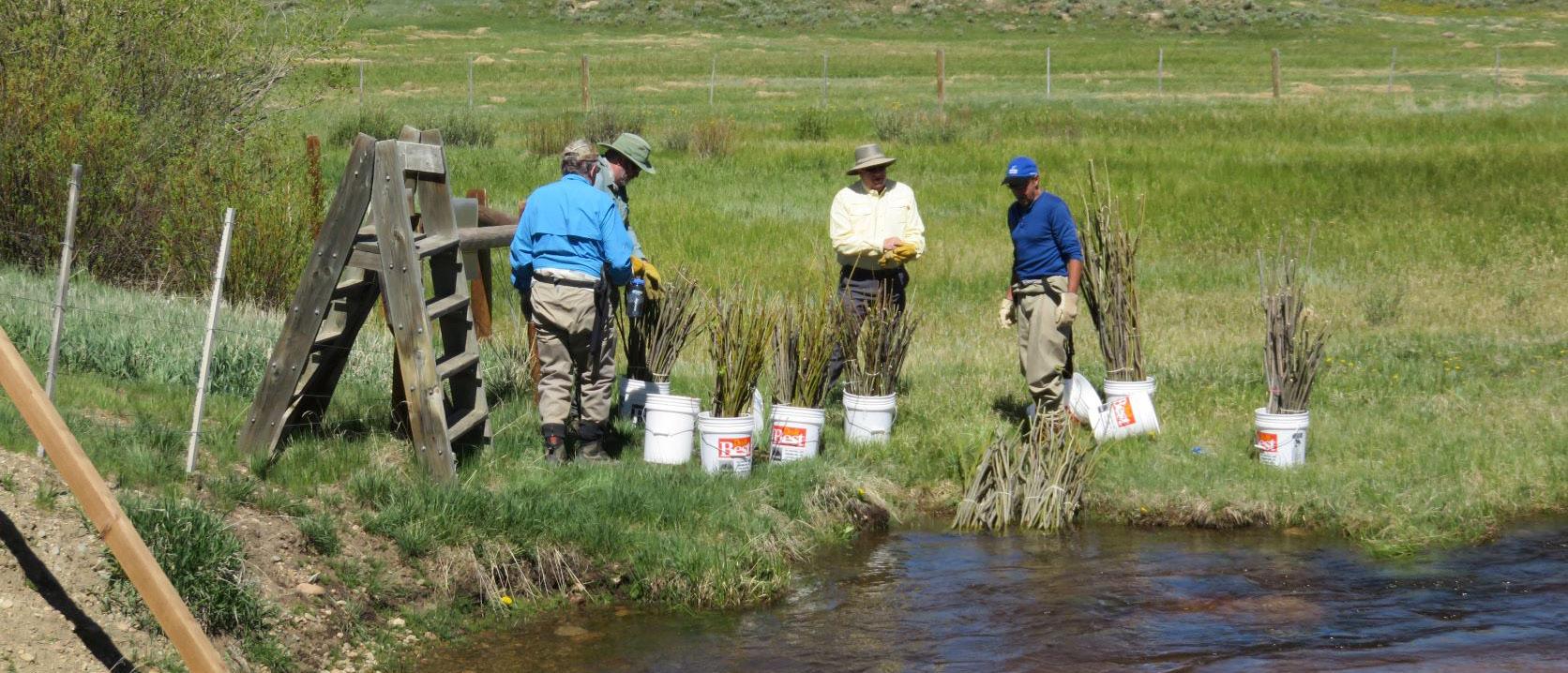
High Country Angler • Summer 2023 www.HCAezine.com 28

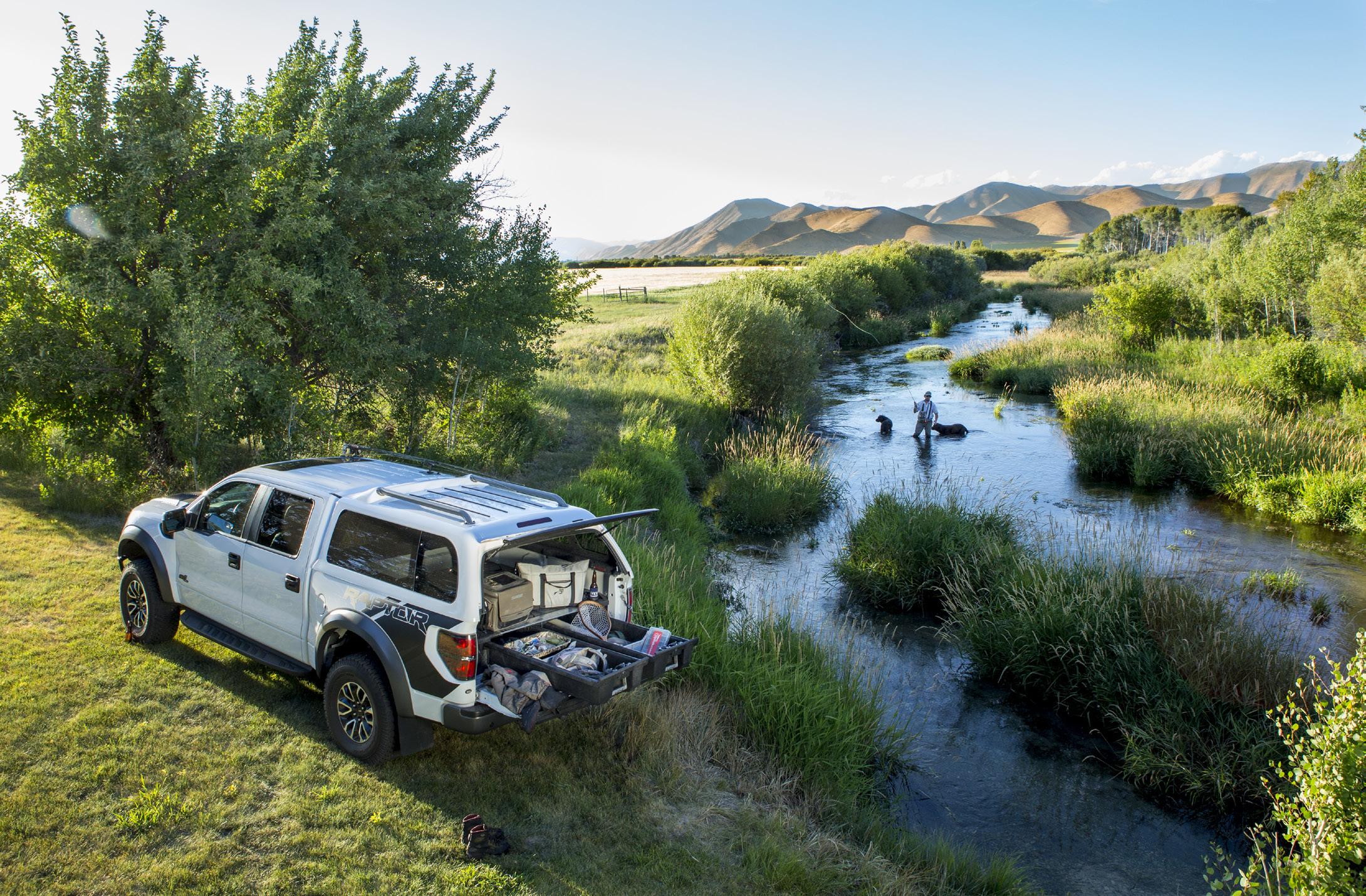


www.HCAezine.com Summer 2023 • High Country Angler 29 We Have You Covered! 5425 S. Broadway Littleton, CO 80121 6955 W. Colfax Lakewood, CO 80214 WWW.AATOPPERS.COM Get notified of each new issue. Sign up now.
the Y, pausing at the confluence, where I sat and finished rigging. Despite the sun’s warmth the air still bore a hint of chill whenever a breeze caressed my skin, a reminder that even at the height of summer the season carries with it a sense of the fragile and fleeting.
I walked to the base of a beaver dam and tossed a dry fly out into the pond beyond. Almost immediately, a fish hit and I quickly stripped in and released an eightinch brookie. A larger, more purposeful rise form broke the surface where the stream flowed into the head of the pond. I made my way gingerly across the top of the dam and got into casting position below the rise. After two or three drifts in the gentle current, the fish engulfed the fly—the twoweight bending and bucking to a twelve-inch brown.
Late afternoon I filtered some water and returned to camp, mixed powdered lemonade and poured myself a whiskey sour. The moose had evidently moved on. After gathering wood, I started a fire, and once it had burned down to embers, I set my pan down on them and let a couple of bratwurst sizzle. Tomorrow, I’d keep a couple of brookies for the pan.
As darkness fell, I settled into my bag. Nearby a couple of coyotes discussed their nighttime plans then lapsed into silence.
Through the open tent, fly stars made their appearance. All was quiet save the murmur of the stream. This was what I had come here for.

About The Author

Hayden Mellsop is an expat New Zealander living in the mountain town of Salida, Colorado, on the banks of the Arkansas River. As well as being a semi-retired fly fishing guide, he juggles helping his wife raise two teenage daughters, along with a career in real estate.
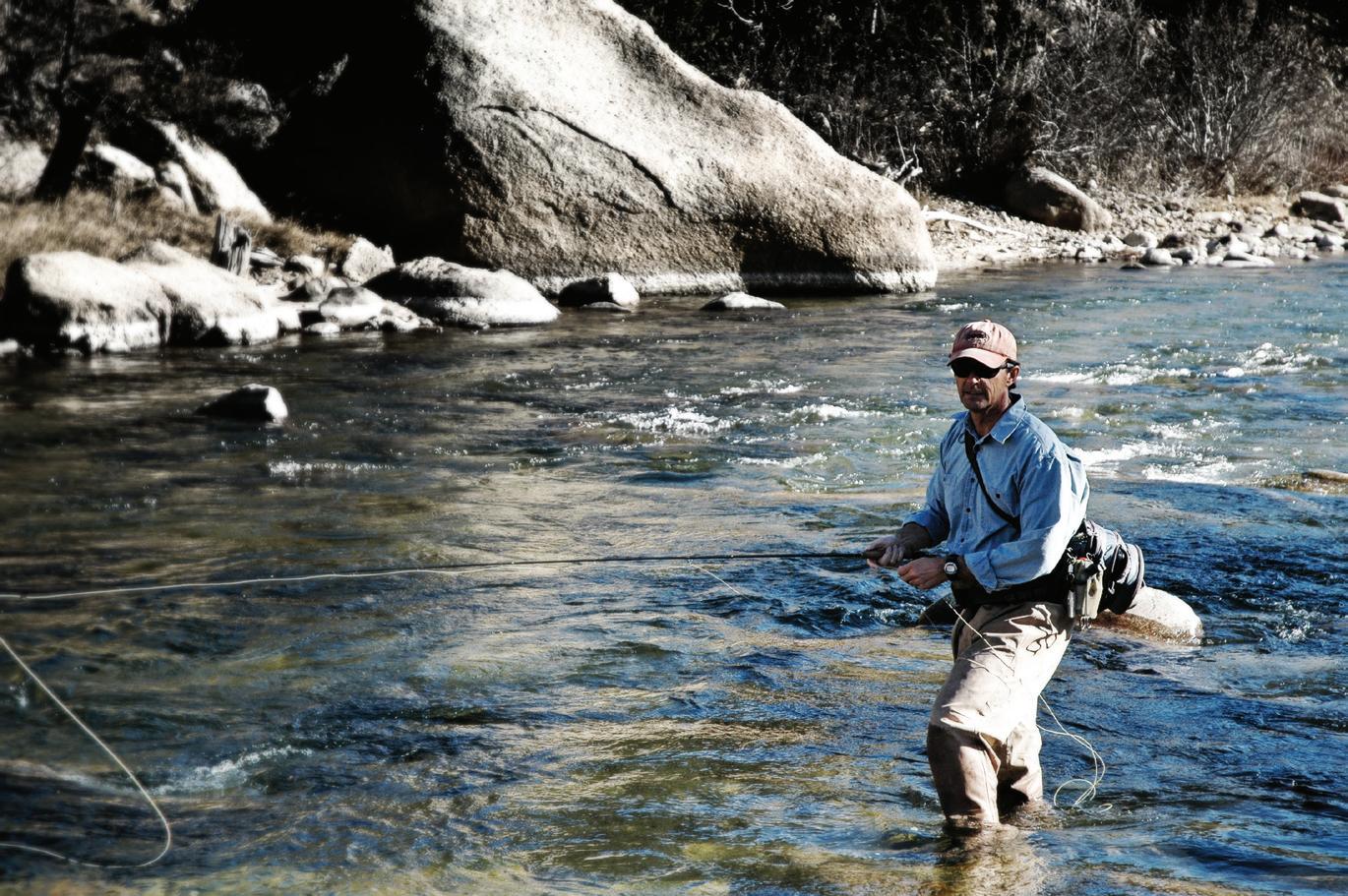
Hayden Mellsop
Fly fishing guide. Real Estate guide.
Recreation, residential, retirement, investment.

www.HCAezine.com Summer 2023 • High Country Angler 31
Easy
The Anatomy of the Euro Nymphing Rod & Reel
The first and most apparent difference between your standard fly rod and a euro rod is the significantly greater length of the euro rod. True euro rods start at 10’ and extend to 11’ or even 12’ in length. The second characteristic of the euro rods is its light, ultra-sensitive, willowy tip. Euro rods typically vary in weight from a 2- weight to 4- weights, while the standard dry fly/nymph/ and streamer rod weighs in between a 4weight and 6- weight. The greater length and lighter weight give the angler the following advantages when nymphing:
1. Greater Reach – in euro nymphing, you are typically fishing just past or directly under the tip of your fly rod. The greater length increases your reach and range, allowing you to cover more water and fish deeper over a relatively short length of river.

2. Greater Sensitivity – the light weight and thin tips of the euro rod transmit every tick, bounce, and subtle take from the bottom of the river directly
into the hand of the angler. Like dissecting the river with a razor-sharp scalpel, these rods allow the angler to meticulously pick apart every riffle and pool within reach!
3. Fewer Breaks & Lost Flies – the long, light tips of the euro rod acts like an oversized shock absorber, and the runs and luges of even the largest fish are dampened and defeated by these quick-flexing rods. This allows the angler to fish lighter tippet, which in turn spooks fewer fish and eases them in to more frequent strikes.
Holding these long rods out over the water can be a workout unless they are properly balanced. A slightly oversized, large arbor reel is the best match for balancing out these rods and finishing out your euro rod/ reel combo.
With the holidays right around the corner, here are three highly- rated, euro nymphing rods or reel combos that will serve you well on the water!
www.HCAezine.com Summer 2023 • High Country Angler 33
Grey’s FIN – 10’ 3 weight – Beginner Rod/Reel Outfit
Backed by one of the best warrantees in the industry and available for a reasonable $279.95 that includes a rod, reel, line, and padded travel case, the Grey’s FIN is a great entry level outfit as you test the water and hone your skills as a euro nympher.
TFO Stealth – 10’6” 3 weight – Intermediate Rod
A truly high-performing and versatile fly rod, the TFO Stealth offers upgraded graphite, resins, and components that makes this rod fish well beyond its $349.95 price point!
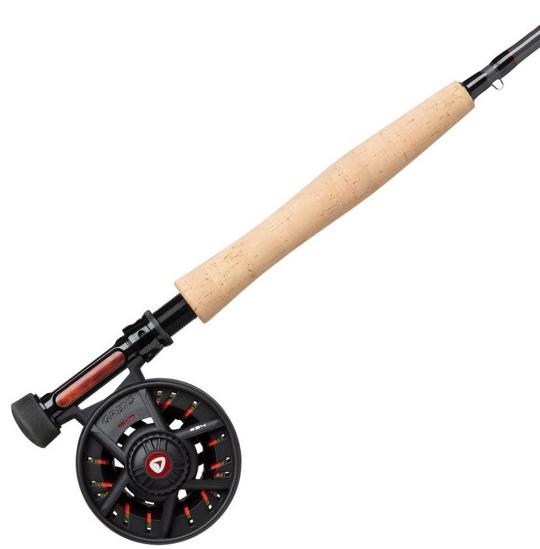


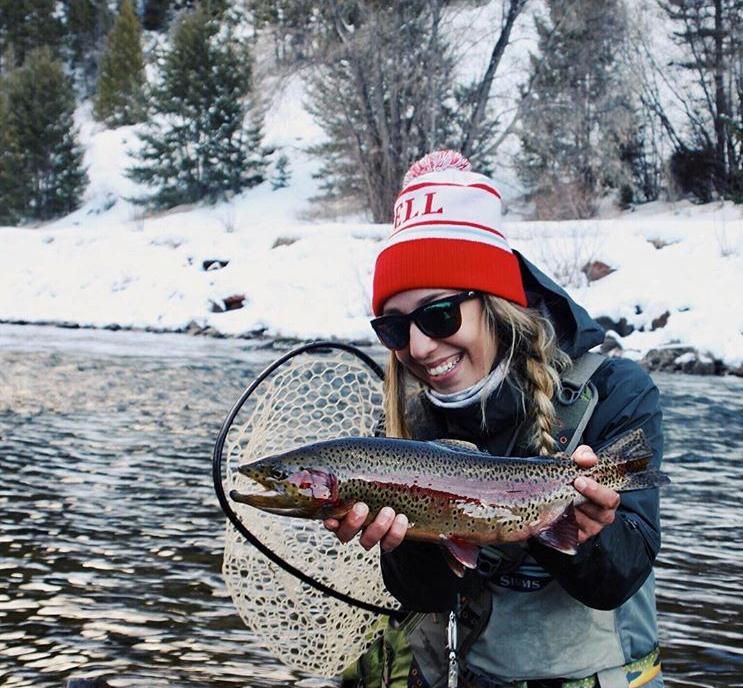
Book Today!
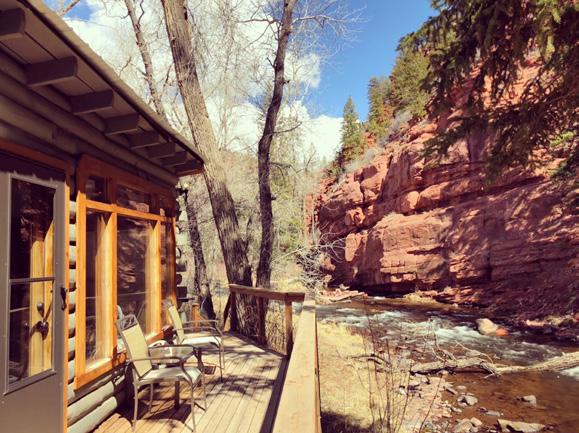

High Country Angler • Summer 2023 www.HCAezine.com 34
‣ Private Frying Pan access ‣ Minutes from downtown
2561 Frying Pan Road, Basalt ‣ Riverfront cabin rentals ‣ Weddings & special events
210.336.2613 thedallenbachranch.com thedallenbachranch@gmail.com
@shyanneorvis
Photo Credit: Temple Fork Outfitters
Photo Credit: Pure Fishing
Douglas Sky G – 10’ 3 weight – Precision, Expert Rod
For those that like to drive fast, appreciate top tier manufacturing and performance, and are looking to take on the water with the latest groundbreaking fly rod technology, the Douglas Sky G is your rod! Made with graphene (claimed to be 10X stronger than steel at only 5% the density) and titanium guides, the Sky G continues to claim 1st place in competitions and fly rod shootouts, and is one of the lightest and most responsive rods on the market today. With a price of $895, the Douglas Sky G may just be the first and last euro rod you ever purchase.

So, if you’re going to toe the line and try your hand at euro nymphing this season, regardless of your budget and skill level, investing in a solid euro rod and reel is going to make sure you are a competitor on the water!
About The Author
Peter Stitcher is an Aquatic Biologist and owner of Ascent Fly Fishing. Originator of the Biologist Crafted Fly Selection, Peter and his team build their clients’ fly selections specific to the bugs in the waters they fish, when they fish them. You can contact Peter or restock your fly box at: www.ascentflyfishing.com.
• Walking distance to the gold-medal waters of the Gunnison River

• Near Blue Mesa Reservoir
• Vintage charm and ambiance
• Great outdoor space
• Multiple room layouts

• Fully stocked kitchens
• Spacious boat parking, including free long-term for multiple stays
www.HCAezine.com Summer 2023 • High Country Angler 35
Photo Credit: Douglas
www.IslandAcresResort.com
Island Acres 38339 US Hwy 50 Gunnison, CO 81230 970.641.1442
TroutFest Light Caddis
There’s a party coming to town. Save your day and save the date - July 8, Saturday, from 12pm-6pm in Denver at Coors Field. Colorado Trout Unlimited is hosting a day of fun and games, with a little fly tying thrown in. This is not your typical fly fishing show, and so the fly tying is not your typical fly tying mega event. Fly tying is just one of the many activities of the day.
Admission is free and parking is free. There will be youth activities, raffles, games, and stadium tours. Stay the evening for an International Fly Fishing Film Festival (IF4) showing. See the CTU webpage for full schedule and film ticket info at coloradotu.org/troutfest.
The tying demo will be presented by a small contingent of expert tyers who simply want to have a little fun themselves. Different from a fly-tying expo, there will be more chit-chat, more one-on-one tying, more focus on furthering the mission of TU.
Wow, Coors Field as the venue. That’s way different and extra special for a fishing party. To celebrate the event, I thought since beer brands promote taste with low calories, then I would fashion a tasty but low calorie fly to match. Caddis come in all sizes, and we love to throw the bigger mid-season caddis patterns. But sometimes the flurry of caddis popping in and out of the small-stream bankside brush are small.
HOOK: DRY 18
THREAD: TAN 6/0
PLAY VIDEO
UNDERBODY: TAN THREAD
WING: BROWN FOAM 1 MM
LEGS: COACHMAN DRY FLY HACKLE
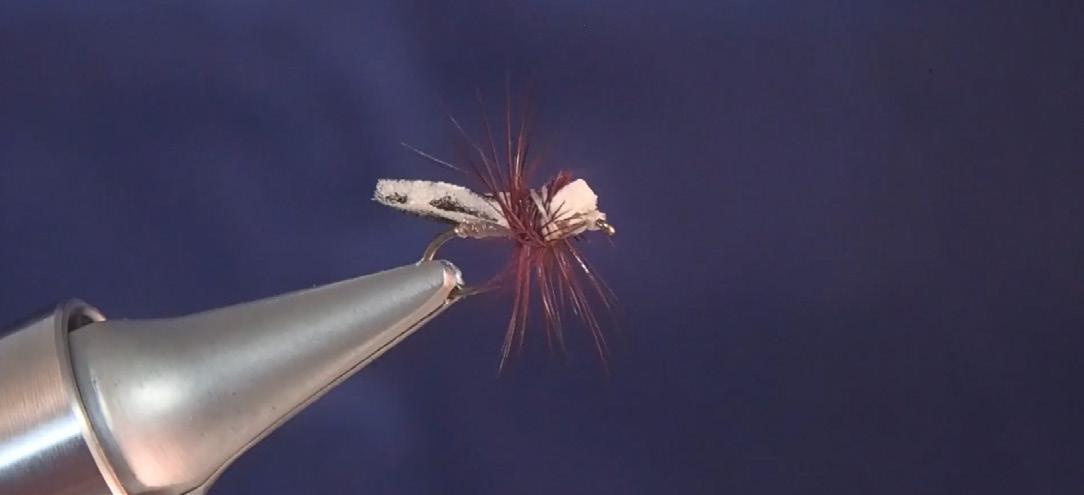
Now I don’t know how one would count the calorie content of a fly. Fly fishers commonly talk about giving a trout a meal, meaning a big fly, be it an atypically large nymph, dry, or streamer. We assume a bigger bug means a better meal. But trout, while not smart, are opportunists, so sometimes a whole lot of small takes add up to filling their calorie quota for the day. So small hook, thin body, foam wing make for a small but high-floating caddis dry. You can stay home and count calories. I’m going fishing.
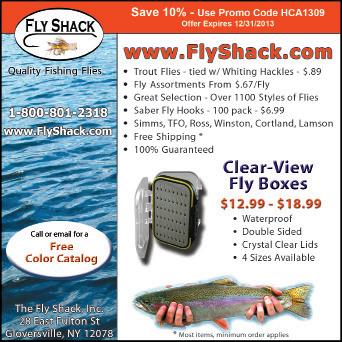
High Country Angler • Summer 2023 www.HCAezine.com 36
FIT TO BE TIED • BY JOEL EVANS
Save 10% - Use Promo Code HCA1703 Offer Expires 6/30/2023
About The Author
Joel Evans is president of the Gunnison Gorge Anglers chapter and the current Southwest Regional Vice President of Colorado Trout Unlimited.
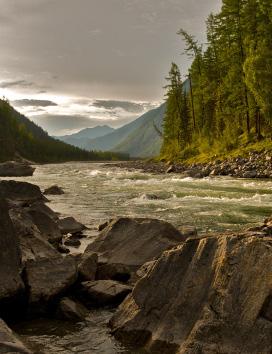

Join our advertisers Reach the Fly-Fishing community GOFISHING HCAMAGAZINE.COM
Rising to the Native Trout Challenge

An Interview with Mark and Judy Cole
Mark and Judy Cole are longtime TU members and volunteers based out of Leadville, and affiliated with the Collegiate Peaks Chapter. They recently became the first Coloradans to successfully complete the Western Native Trout Initiative’s “Western Native Trout Challenge” –
catching and releasing native trout across 12 different western states. They took the challenge one step further, catching all of their trout with Tenkara gear. We had the chance to ask them about their experience chasing down cutthroat and other native trout across the west.

39
Judy and our guide having lunch on the Bogachiel River during very low flows.
HCA: What inspired you to tackle the Western Native Trout Challenge?
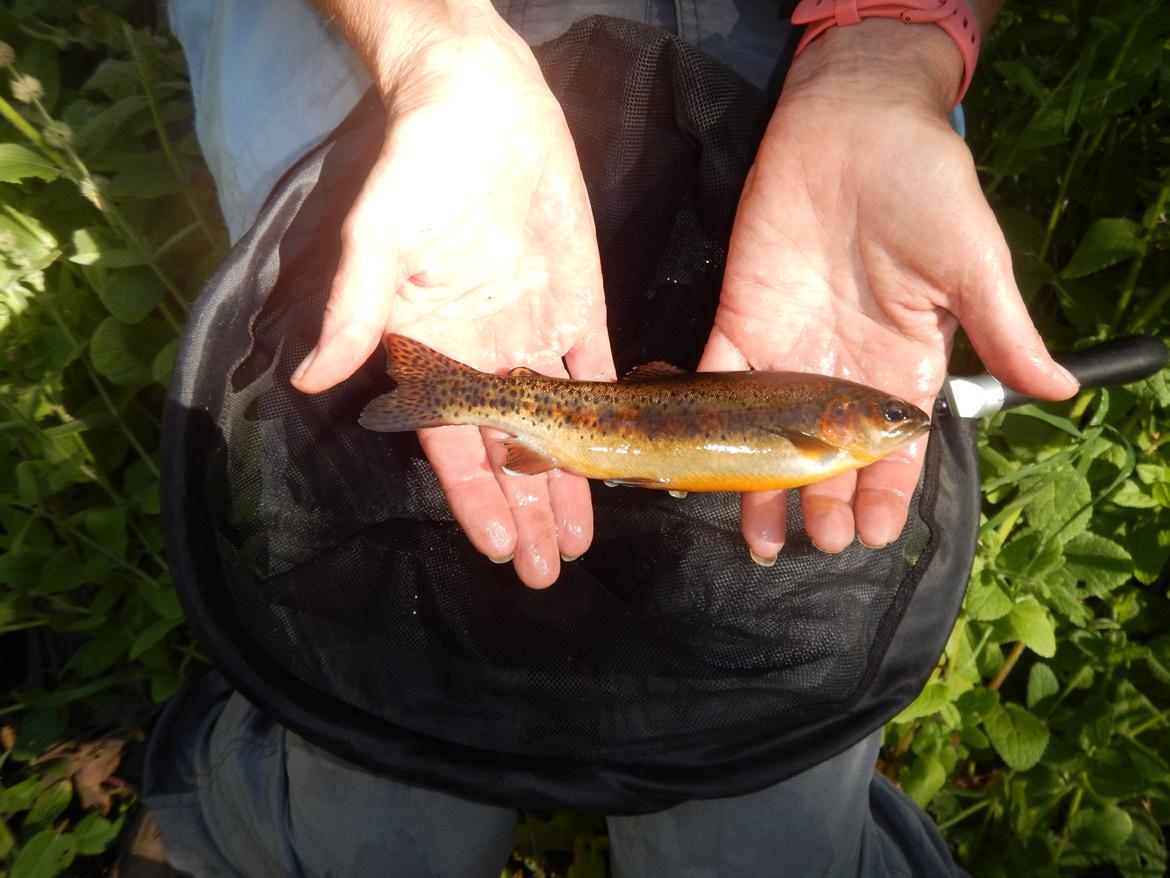
Mark & Judy: Our first trout challenge grew out of the restructuring of the cutthroat trout taxonomy in Colorado after modern genetic analysis provided a positive identification of the various subspecies. The genetics data clarified the number of species and provided information on where genetically pure populations existed. We scoured the scientific literature and identified where native trout populations existed, and then set out to catch and photograph them. This took us to many places around Colorado that we would not have otherwise visited, and caused us to appreciate how restricted our Colorado native cutthroats had become. We were successful in catching all the then-known lineages – Blue and Green lineages of Colorado River Cutthroats; Purple lineage ,Greenback Cutthroat Trout; Orange lineage, Rio Grande Cutthroat Trout. The Yellow lineage, Yellowfin Cutthroat Trout and Red lineage, San Juan Cutthroat Trout, were thought to be extinct. We had finished our quest when Colorado Parks and Wildlife had the audacity to find remnant populations of San Juan Cutthroats. We have yet to chase the elusive San Juan, but it is on our radar. We are hoping that the current efforts by CPW to locate remnant populations of Yellowfin Cutthroat Trout are successful, and they throw us another curve.
From there we did the Wyoming Cutt Slam and the Utah Cutthroat Slam, and had a great time completing these challenges. So, when we saw the notice for the Western Native Trout Challenge, we immediately sent in our registration fees, and we were on our way.
HCA: Which was the first species you targeted –and which was the last one you got to complete the challenge?
Mark & Judy: The first challenge fish that we caught was the Gila Trout in New Mexico. During our first year, when we earned the Expert Caster Level (6 fish from 4 different states), we stuck close to Colorado as we were babysitting our first granddaughter every other Friday, so we did a lot of out and back. As we ranged farther from home while working on the Advanced Caster Level and the Master Caster Level, our trips became longer and we no longer “ping ponged”
back and forth from Colorado to single destinations.
Our last Challenge fish, the Little Kern River Golden Trout, we caught twice. We thought that we would be able to catch all three of the California Golden Trout during one trip through the southern Sierras in 2021, and we were successful in catching Golden Trout and the Kern River Rainbows, but the Little Kern River Golden Trout eluded us. The problem was that the forest in the Little Kern River drainage was closed due to forest fires, and the subsequent hazard removal that the Forest Service was conducting. A year later we were back and made special arrangements with the Golden Trout Pack Station, which was allowed to reopen on a limited basis. When we arrived, we had to use the code provided to open the Forest Service gate. As a result, we had the national forest and the Golden Trout Wilderness pretty much to ourselves.
The morning after we arrived at the pack station, we mounted up and rode to the Little Kern River bridge, had lunch, hiked a short distance downstream, and began fishing. We were soon into fish, but they were not what we expected; they looked more like rainbows than the Little Kern River Goldens from the illustrations. They would count for our last Challenge fish requirement as they had enough Little Kern River Trout genes, but we were not satisfied. After all, we had come a long way to catch our last Challenge fish and we wanted something that fit our expectations. The pack station staff said that there were more
High Country Angler • Summer 2023 www.HCAezine.com 40
Judy holding the Last challenge fish, a Little Kern River Golden Trout from Click’s Creek California.
12PM - 6PM 12PM - 6PM COORS FIELD COORS FIELD
EXHIBITORS | CASTING AREA | FLY-TYING | YOUTH ACTIVITIES | RAFFLES & GAMES | PRESENTATIONS | VIP SECTION | STADIUM TOURS | BALLPARK CONCESSIONS OPEN | FREE PARKING
FREE TO ATTEND!
(IF YOU REGISTER BY JULY 6TH)
Tickets & Information: CLICK HERE
AFTER TROUTFEST, JOIN US FOR A SHOWING OF AFTER TROUTFEST, JOIN US FOR A SHOWING OF THE INTERNATIONAL FLY FISHING FILM FESTIVAL THE INTERNATIONAL FLY FISHING FILM FESTIVAL
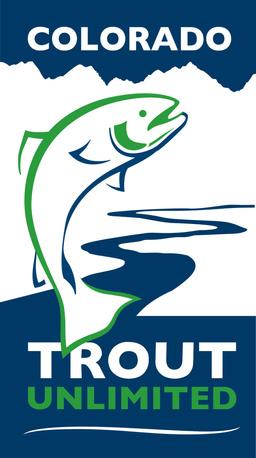


(IF4) ON THE COORS FIELD JUMBOTRON! (IF4) ON THE COORS FIELD JUMBOTRON! 7PM -TICKETS: $20 7PM -TICKETS: $20

www.HCAezine.com Summer 2023 • High Country Angler 41
genetically pure fish in Clicks Creek meadow, and they would have the appearance that we were expecting. So, with sore butts from the previous day’s horse ride, we hiked the 10-mile round trip to Clicks Creek, where we caught more typical golden hued Little Kern River Goldens. We were satisfied, and these were the photos that we turned in to meet the Challenge requirements.
HCA: What was the most unique setting in which you caught one of your Native Trout Challenge fish?
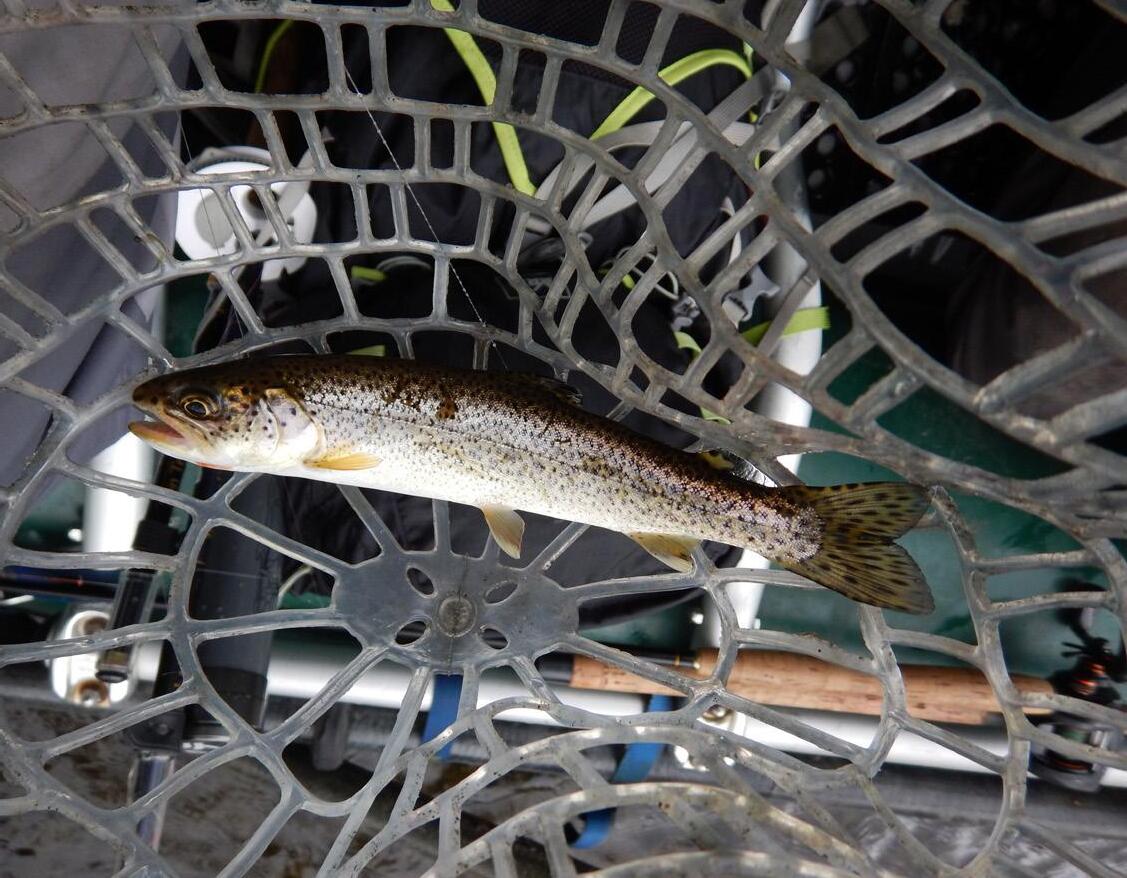
Mark & Judy: The most unusual setting was on Whitewater Creek in New Mexico, where we caught
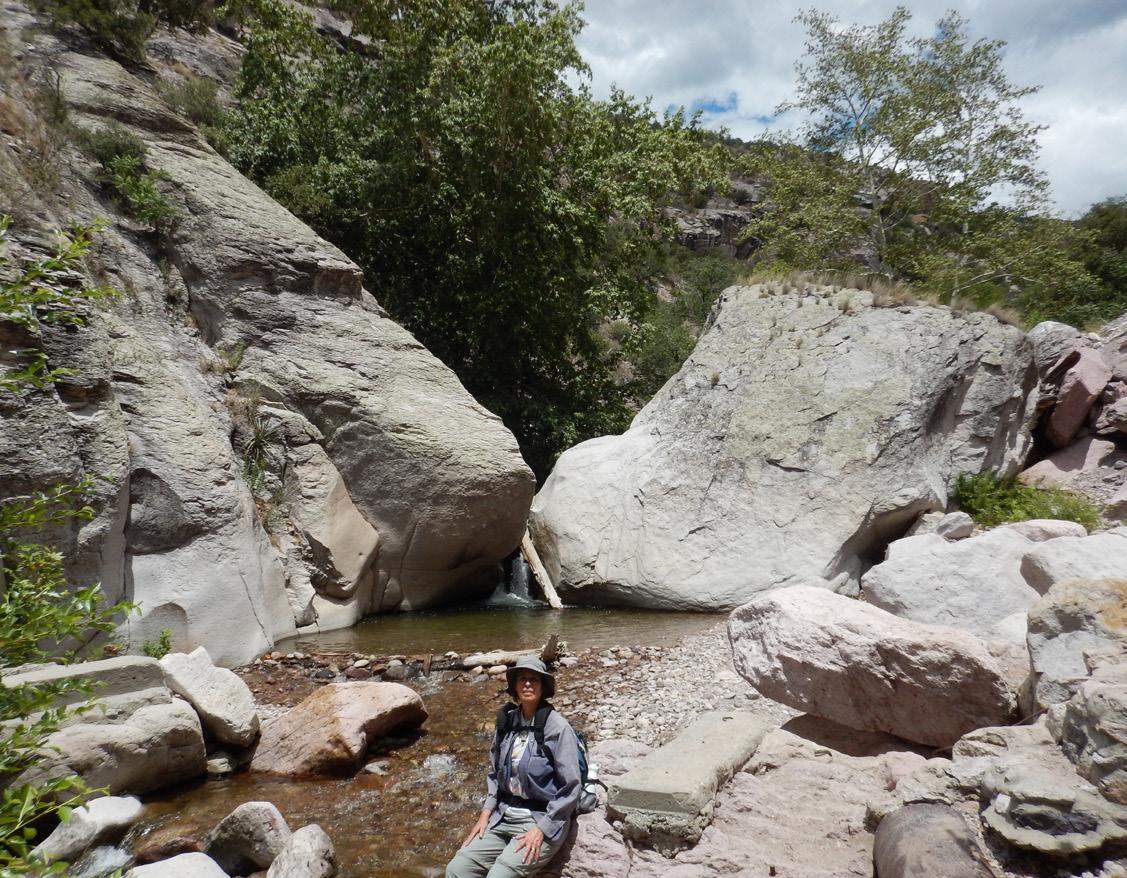
a pedestrian walkway above the stream. This attracts large groups of recreationists. We were there during the July 4th weekend, and the temperatures were in the high 90’s. There were folks on the “Catwalk” and in the stream enjoying the cool waters. Every pool had groups of recreationists either hiking through the pools or sitting in the water. The fish did not seem to mind; they were habituated to the constant presence of people. Surprisingly, as soon as people vacated a pool, we would catch Gilas.
HCA: What was the most challenging species to find and successfully catch?
Mark & Judy: Perhaps the most challenging fish was the Coastal Cutthroat in Washington State, due to stream access restrictions. We had selected the Olympic Peninsula as our target location for Coastal cutthroats—not only to fish but to visit friends who had moved there. Once we arrived, we were surprised that most of the rivers were closed to angling due to low waters and high stream temperatures.
The one stream that was open was the Bogachiel River. In order to access the river, we hired a guide to float the river, although the term float is a bit of a misnomer, as it often turned into a “push, pull and drag.” We drove from our campground near Port Angeles to Forks, met our guide, and launched. We
our first Challenge fish—the Gila Trout. In the 1800’s there was a gold mill at the mouth of the stream. Needing a water supply, the mill owners built a pipeline down the canyon, but it was continually washed out during spring floods. Their solution was to move the pipeline to the canyon walls above the flood waters. This was called the “Catwalk”.
The mill was eventually abandoned, and the Catwalk deteriorated. During the Great Depression, the Civilian Conservation Corps rebuilt the “Catwalk” as
High Country Angler • Summer 2023 www.HCAezine.com 42
Judy sitting in front of a pool that held six wading recreationist moments prior to taking the photo. We caught several fish along the ledge to the left after the folks had moved on.
Washington Coastal Cutthroat Trout from the Bogachiel River on the Olympic Peninsula, Washington.
HCA: As part of your journey, did you get to see or learn about the restoration efforts that are helping bring more of these native fish back in western waters?
Mark & Judy: We saw different types of fish barriers that various states had erected to prevent upstream migration of invasive species. Some looked effective, while others had clearly failed as we caught invasive species above the barrier in addition to our targeted fish. During our research to identify and locate our target species and streams, we often read about efforts to protect and restore native trout. Although there is an impressive amount of work that has been and is being done, we feel that for the most part it is insufficient. Most of the native trout species only occupy a small part of their native range, mostly due to the stocking of invasive species and other human caused environmental harms. The Challenge reinforced our impression on how restricted our native salmonids truly are. Most of our fishing occurred in small streams that are isolated from each other without interconnections. There is little opportunity for natural genetic exchange
to help sustain vigorous populations. These fish have little access to larger streams and rivers where the natives can grow to their full potential. We saw the hand of man everywhere we went except Alaska. This is the only place where native fish are still able to roam free without barriers or hindrances.
HCA: What would you say to those who have rarely – or maybe never – fished for one of Colorado’s or the West’s native trout?

Mark & Judy: We would say, “What are you waiting for?” This is an opportunity to explore new territory and catch unique species of cutthroat trout and char. It will also get you away from the crowds on the more popular streams, rivers, and lakes. It is fun, exciting, and educational to try new fishing venues. Opportunities like the Western Native Trout Challenge, or the more geographically-restricted Wyoming Cutt-Slam or the Utah Cutthroat Slam, provide an incentive to try something new. Go for it. The Challenge has no deadline, there is no time limit, and with the three levels of completion you can work on the entry Expert Caster Level in states close to you, as we did. $23 of the $25 registration fee goes toward restoration and conservation of the salmonids that you are fishing for.
HCA: Now that you’ve completed the Western Native Trout Challenge, what’s next for your fishing journeys?
Mark & Judy: We are currently working on the California Heritage Trout Challenge. Because we completed half of the California Challenge while completing the Western Native Trout Challenge, it seems reasonable to use this head start and work on completing the California Challenge. We plan to revisit California in late summer and fall and catch the two additional fish that we need. After that we plan to chase the San Juan Cutthroat in Colorado to complete our attempt to catch all the existing native Colorado cutthroat trout. We would also like to return to some of the states and streams that we visited during the Challenge and spend more time in pursuit of native fish.
High Country Angler • Summer 2023 www.HCAezine.com 44
The barrier on Sheep Creek, Utah where we targeted Colorado River Cutthroat Trout but also caught Brook Trout.
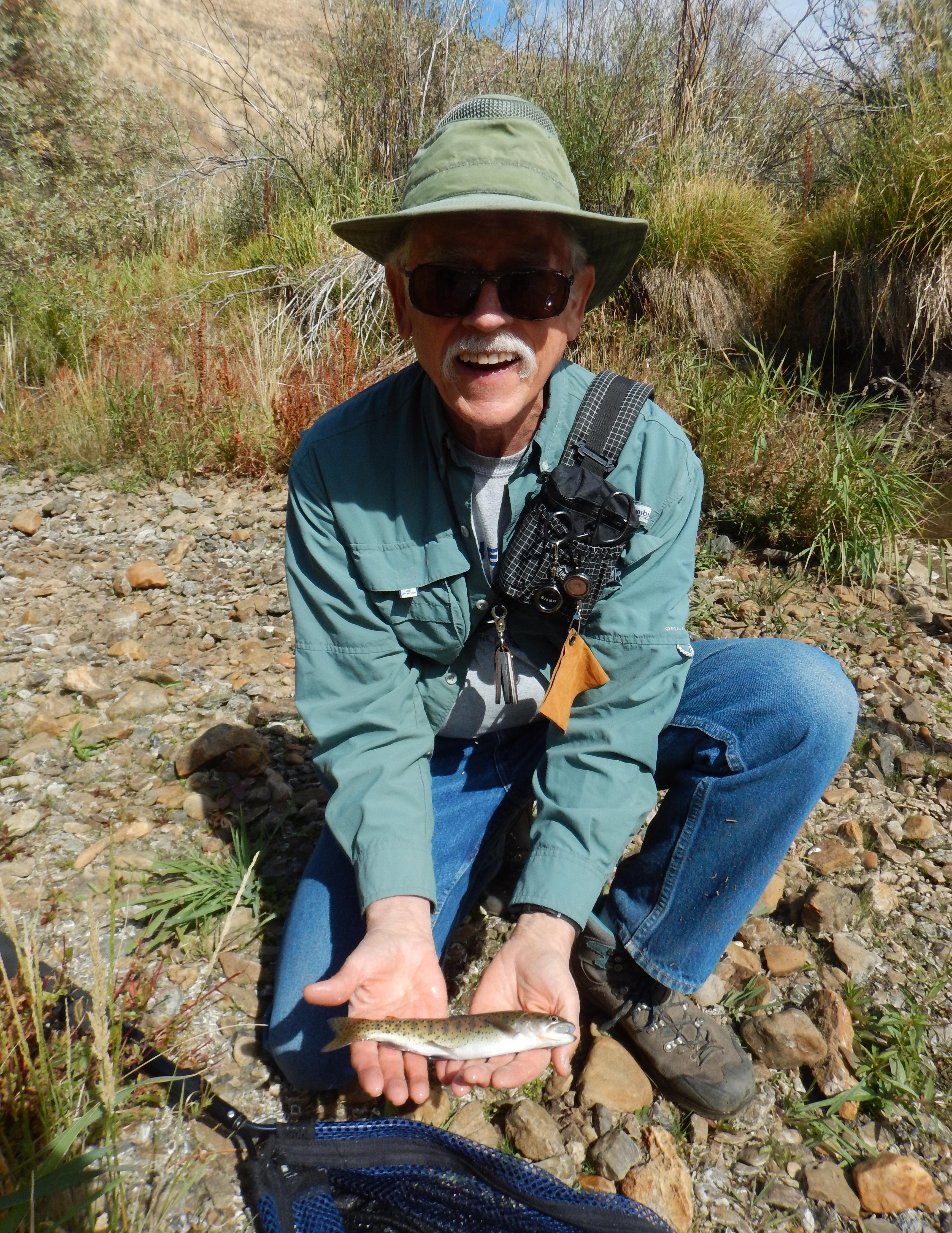
45 A
happy Mark having caught his Lahontan Cutthroat Trout on the North Fork Humboldt River, Nevada
+
TU PARTNER PROFILE


THE BOATHOUSE AND SUSTAINABILITY AT ANGLERS ALL
This spring, Anglers All announced the opening of the Boathouse, a new building and showroom behind the main shop location that was purpose-built to display fly fishing watercraft, boating accessories and fishing gear. The new showroom offers one of the few spaces in the region where anglers can see boats, rafts, float tubes, kayaks and stand-up paddleboards completely put together, and ready for
the water. But beyond the wide array of watercraft on display for purchase, the Boathouse represents another step in Anglers All’s commitment to sustainability in its operations.
Long-time customers will remember the old cabin located behind the shop. With the Boathouse, Anglers All removed that old, inefficient structure and replaced it with a high-efficiency building specifically
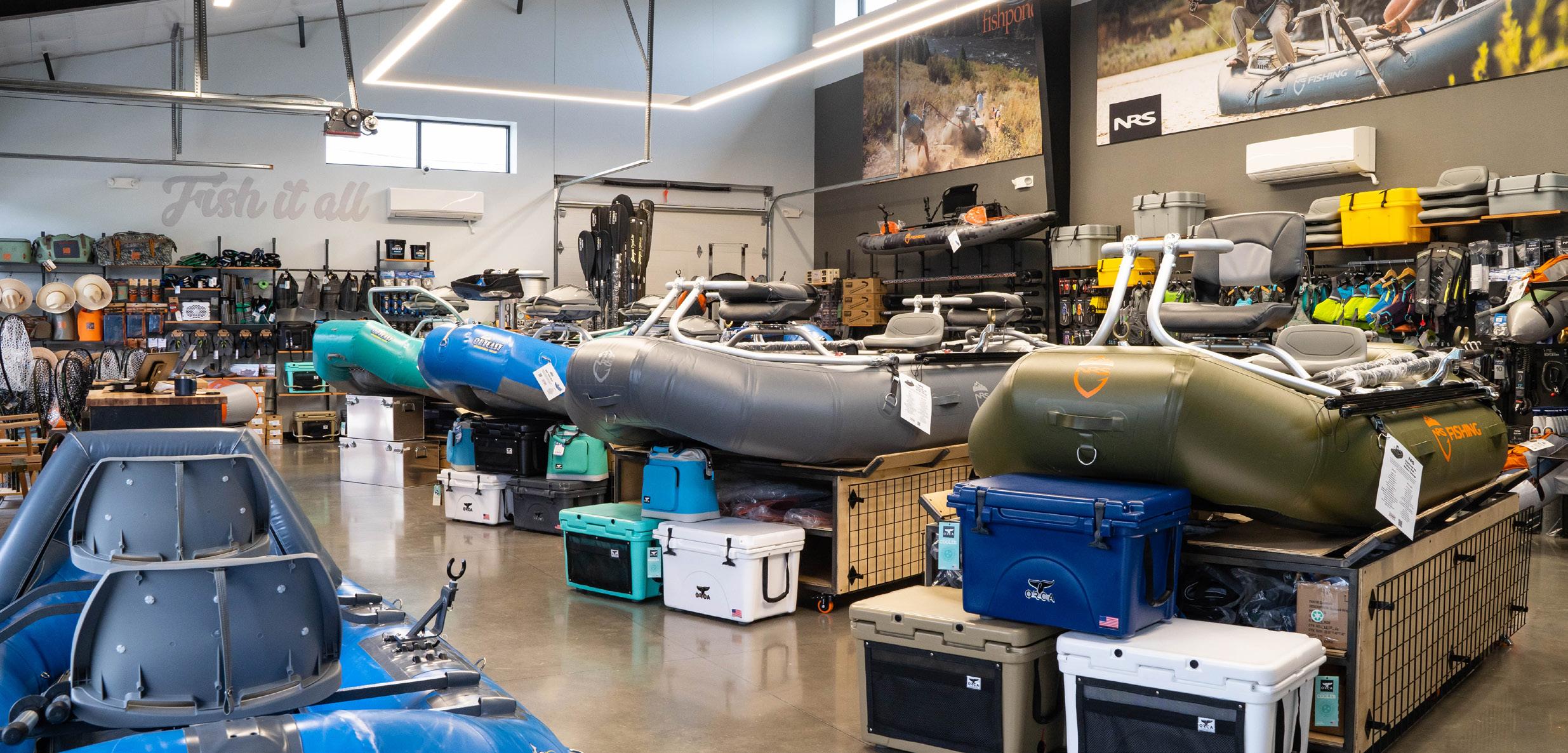
High Country Angler • Summer 2023 www.HCAezine.com 46
designed for displaying watercraft.
“In addition to providing customers with a way to see boats in person, The Boathouse is a part of our ongoing effort to reduce the environmental footprint of the business,” said owner Chris Keeley. “The new high-efficiency building will be solar-powered and totally self-sufficient.”

The new building was designed with a singlepitch, south-facing roof for solar performance. New Rivian EV charging stations have been installed in the parking lot. Eventually, the Boathouse will produce enough power to meet its own energy needs. It will power the new electric vehicle charging stations. It will even provide power to the main fly shop building next door. The improvements also allow Anglers All to reduce water consumption associated with the old cabin and the lawn surrounding it.
“Anglers All has been a part of the fishing community on the Front Range for 69 years,” said Keeley. “The shop has done a lot of growing and improving
since Jim and Jane Poor first opened the doors in 1954. And recently, we’ve worked hard to prove that you can be profitable in a retail business and still have a small environmental impact.”
When the team at Anglers All started working on the concept, and ultimately the building plans for the Boathouse, it gave them the opportunity to further their sustainability mission with a clean slate. That is not to say they have not been working over the years to improve the original Fly Shop building, the way they do business, or the organizations they choose to work with in the conservation space.
Installing solar panels on the roof of the Fly Shop, swapping all light bulbs to high efficiency versions, composting food waste, switching to recycled and reusable package for online order shipping and installing a keg system to remove beer cans and bottles for parties has all had real impacts to energy usage and sustainability.
Anglers All has also joined the 1% for the Planet
47
community and has chosen to support local mine reclamation projects organized by Colorado Trout Unlimited as the major beneficiary. These mine clean up projects focus on removing harmful pollutants from the highest headwaters of many favorite fishing rivers from the South Platte to Clear Creek to the St. Vrain. Keeping pollution from washing downstream fits in perfectly with a phrase heard around the shop regularly: “We are for cold clean water”. By leveraging their direct support through some collaborative fundraising, Anglers All has helped raise more than $50,000 for these clean-up projects in the last three years alone.
The team also finds ways to continually support other local and national organizations. Although a long way from salt water, saltwater fly fishing is important to the history of Anglers All and working with The Bonefish Tarpon Trust is a good example of their impact reaching far and wide. A more local example includes a recent river clean up with Protect Our Rivers, where staff helped run a river beat and rent waders to volunteers cleaning up trash along Denver’s urban South Platte River. The Mile High 25 fly fishing tournament is yet another example. This year a large portion of each
team sign up will go to further clean water projects along the South Platte. In this fishing-tournamentmeets-scavenger-hunt, teams of two anglers spread out all over the state’s public waters trying to catch, video and release 25 different fish species all in two days on the fly. In their 8th year, this event is a local favorite and a huge challenge!
For more info
The Boathouse is now open for business on the Anglers All campus at 5211 South Santa Fe Drive in Littleton. You can come and see first-hand both an array of fishing watercraft in an innovative new retail space and a business that has built sustainability and conservation right into its DNA. You can find out more on their website, https:// www.anglersall.com/, or by calling the shop directly at 303-794-1104.

High Country Angler • Summer 2023 www.HCAezine.com 48

What makes a species a species?
Q AIt seems like there are many different types of Western native trout - from Gila and Apache, to Redbands and Golden, and then we have all the different types of cutthroat. What makes them different? How do scientists decide what should be named as a species or subspecies instead of just a variety?
This is an interesting question; a question that zoology students and resource managers have discussed for decades, possibly longer. What is a species? Scientists generally agree that a species of living entities (animals, plants, micro-organisms) must be “reproductively isolated” to qualify as a species. This means that they do not interbreed with any other “species” and the offspring resemble the parent. Rainbow trout do not suddenly produce lake trout or any other present-day trout. The native trout of western United States and Canada provide interesting examples of species development and the factors involved with speciation.
Fifteen thousand years ago, as the last Ice Age was nearing its end and the continental ice sheets were starting to recede; the area that is now mountainous western North America did not have aquatic habitats that could support trout populations. Scientists who have studied the probable distribution of trout ancestors during the Ice Age have concluded that coastal streams filled with melt water from the massive ice sheets were the only waters where these fish could have survived. These scientists do not think the trout ancestors were marine
fish, but they may have been similar to present-day salmon; spawning in fresh water then maturing in the nearby ocean waters. After the continental ice sheets retreated, thousands of lakes and enormous distances of streams and rivers became available to the coastal trout ancestors. The trout moved in, but for many the life cycle changed. They no longer needed to go to the ocean to mature. They could complete their life cycle in the streams and lakes where they started their life; although some, those we call steelheads, continue to migrate.
The genetic adaptations required for a nonmigratory life cycle are somewhat different from those that facilitate a migratory life cycle. The genetic adaptations that led to stable populations of the coastal, migratory populations had to include “information” for initiating and surviving the migrations (both outbound and inbound), as well as feeding in the ocean environment. Many, perhaps most, of the inland, non-migratory populations “needed” similar survival abilities, but had to accomplish their complete life cycle in place. Perhaps the most profound genetic change caused by a non-migratory life cycle is the loss of genetic interactions with other populations of the same species.
The development of distinct populations, populations that biologists eventually classify as species and subspecies requires more than simply surviving. “Survival of the fittest” ultimately is determined by which set of genes leads to the greatest reproduction. The genetic makeup of each generation is determined by which adults produce the greatest number of offspring. Genetically controlled factors such as adult size, coloration, feeding “skills”, body
High Country Angler • Summer 2023 www.HCAezine.com 50
THE LAST CAST • JOHN G. NICKUM
conformation, and enhanced reproduction determine the eventual characteristics of reproductively isolated populations.
Over time reproductively isolated populations evolve into distinct varieties, then over longer periods of time into populations that biologists call subspecies and species. The lakes and streams of western North America provide an excellent environment for the development of isolated fish populations that have unique characteristics...characteristics that enable them to survive and prosper from generation to generation.
Genetic research, such as that which was studied at the Fish Genetics Research Center in Beulah, WY in the 1960s-70s, has indicated that as many as 6 – 8 generations are required for a single genetic characteristic to become “fixed” in a population. Looking back at the changes in climate conditions in western North America, we can see that there has been ample time for unique characteristics to develop in the trout living in each isolated lake or stream.
The questions related to what we call these unique, isolated populations of fish are not really a biological questions. The practices of taxonomy and classification are important to science, but not to the fish. The effects of their unique genetic “structure”, and the physical and behavioral characteris-
tics that result from the unique DNA, are all that matters to the fish.
Graduate students in the biological sciences have devoted decades of formal seminars and informal “bull sessions” to the question: “Exactly, what is a species?” I recall one such session from my years as a doctoral student in zoology. Dr. Richard Blackwelder, who literally wrote the book on the subject (Taxonomy: A text and reference book, 1967) joined our “bull session” and provided a definitive answer to our group: “A species is whatever is called a species by a competent authority on the subject.”
All of us with an interest in the salmonid fishes of the western states should thank Dr. Robert Behnke for his many years of service as a competent authority on the fishes of Colorado and of North America. His book Trout and Salmon of North America is a great resource for those who would like to learn more about Western native trout.
About The Author
John Nickum, is a retired PhD. fishery biologist whose career has included positions as professor at research universities including Iowa State and Cornell University, director of the Fish and Wildlife Service’s fisheries research facility in Bozeman, MT, and science officer for the Fish and Wildlife Service’s Mountain-Prairie Region. He was inducted into the National Fish Culture Hall of Fame in 2008.
www.HCAezine.com Summer 2023 • High Country Angler 51















 by Landon Mayer
by Landon Mayer







 by Brian La Rue
by Brian La Rue




























































